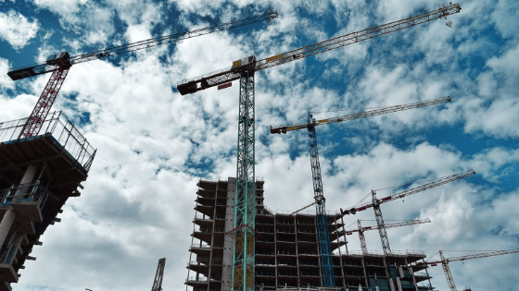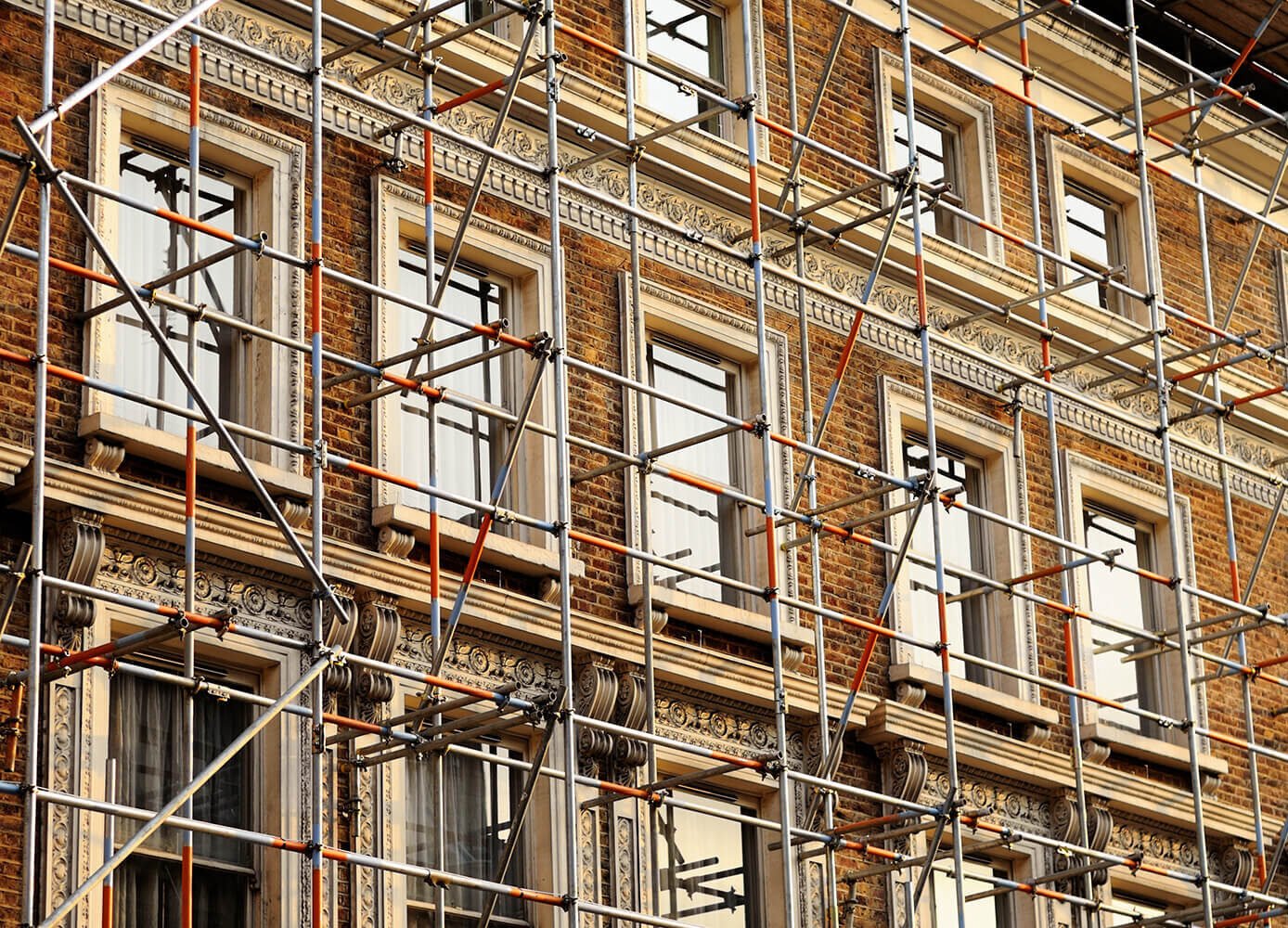Residential Scaffolding Solutions for Safe and Efficient Home Improvements
Residential Scaffolding Solutions for Safe and Efficient Home Improvements
Blog Article
A Comprehensive Overview to the Necessary Features of Scaffolding in Modern Building And Construction
The landscape of contemporary building and construction significantly relies upon reliable scaffolding systems that focus on security, efficiency, and advancement. As jobs grow in intricacy, recognizing the vital attributes of scaffolding ends up being crucial for making certain employee safety and security and optimizing job timelines. This overview explores various sorts of scaffolding, highlights essential security functions, and checks out product developments that contribute to efficiency and sustainability. The implications of these elements expand much beyond mere construction techniques, triggering a more detailed look at just how they affect total task success and worker wellness.
Sorts Of Scaffolding
Although scaffolding systems can vary commonly in layout and application, they typically fall right into a number of unique categories that deal with various building and construction needs - Scaffolding. One of the most usual types include supported scaffolding, put on hold scaffolding, and rolling scaffolding
Sustained scaffolding consists of systems supported by a structure of posts, which give a secure and raised working surface area. This kind is typically utilized for jobs that require significant altitude, such as bricklaying or outside paint.
Suspended scaffolding, alternatively, is utilized for tasks calling for accessibility to high elevations, such as cleansing or repairing building exteriors. This system hangs from an additional framework or a rooftop, permitting employees to lower or elevate the system as needed.
Rolling scaffolding attributes wheels that enable simple movement across a job site. It is specifically beneficial for tasks that need constant relocation, such as indoor operate in huge rooms.
Each sort of scaffolding is developed with specific applications in mind, ensuring that building tasks can be performed effectively and successfully. Understanding these categories is critical for selecting the ideal scaffolding system to meet both job requirements and website problems.
Key Safety And Security Functions
Safety is vital in scaffolding systems, as the possible dangers connected with operating at heights can cause serious mishaps if not effectively handled. Key safety and security features are crucial to ensure the health of workers and the stability of the building and construction site.
Primarily, guardrails are essential. These barriers provide a physical protect versus drops, considerably reducing the risk of major injuries. In addition, toe boards are frequently utilized to stop tools and products from diminishing the scaffold, securing employees below.
An additional crucial element is the usage of non-slip surface areas on platforms. This function boosts hold, particularly in unfavorable weather, consequently reducing the probability of falls and slips. Access ladders must be firmly positioned to assist in safe entry and departure from the scaffold.
Routine assessments and maintenance of scaffolding systems are additionally important. These evaluations make sure that all elements remain in great condition and functioning correctly, dealing with any kind of wear or damages without delay.
Last but not least, proper training for all workers included in scaffolding procedures is necessary to make certain that they understand security methods and can determine possible hazards. Scaffolding. Collectively, these features create a much safer working environment and substantially reduce dangers connected with scaffolding
Material Innovations
Innovations in product science have actually dramatically affected the scaffolding market, enhancing both safety and security and performance in modern-day construction. The intro of high-strength steel and aluminum alloys has revolutionized conventional scaffolding systems. These products are not just lighter, making them easier to put together and deliver, yet additionally offer exceptional load-bearing abilities. This results in scaffolding structures that can sustain better weights while lessening the risk of collapse.
Additionally, cutting-edge composite materials, such as fiberglass-reinforced plastics, have actually emerged as viable alternatives. These products are immune to rust and ecological destruction, therefore prolonging the lifespan of scaffolding systems, particularly in severe weather condition conditions. The usage of such materials adds to decrease upkeep costs and ensures constant efficiency in time.


Style Considerations
Taking into consideration the intricacies of modern-day building and construction tasks, effective scaffolding layout is critical to making certain both performance and safety and security. Style factors to consider should incorporate various aspects, consisting of tons ability, height, and the particular needs of the construction website. Each task presents special challenges, requiring an adaptable approach to scaffolding systems that can adapt to differing problems.
Structural stability is essential; for that reason, designers have to calculate the tons that the scaffolding will certainly sustain, including workers, materials, and equipment. The selection of materials plays a critical role in making sure the scaffolding can endure these loads while staying light-weight and durable. Additionally, the style needs to permit very easy accessibility and egress, helping with the smooth activity of products and employees.
Safety and security attributes, such as guardrails and non-slip surface areas, must be included to decrease threats of mishaps. The format has to consider the surrounding atmosphere, consisting see page of nearby structures and possible threats. By dealing with these design considerations, building firms can boost the performance of scaffolding systems and promote a safer working environment, ultimately adding to the general success of the project.
Upkeep and Assessments
The effectiveness of scaffolding systems expands beyond preliminary style and implementation; recurring maintenance and routine assessments are important to guaranteeing their continued performance and safety and security throughout the duration of a task. Routine inspections need to be carried out by qualified employees to identify any kind of indications of wear, damages, or instability that might compromise the stability of the scaffolding.
Upkeep procedures should include regular checks of structural parts, such as structures, fittings, and planks, ensuring that all aspects remain complimentary and secure from rust or other degeneration. Additionally, the capability of safety functions, such as guardrails and toe boards, have to be examined to ensure conformity with safety and security policies.
Documentation of all assessments and upkeep activities is critical for accountability and governing compliance. A methodical strategy to record-keeping not only aids in tracking the condition of the scaffolding however likewise gives essential evidence in case of an event.
Eventually, developing a thorough upkeep and evaluation routine will substantially lower the risk of accidents and enhance the overall safety of the building site. By prioritizing these practices, building managers can protect workers and maintain the project's stability.

Verdict
To conclude, the important attributes of scaffolding in contemporary construction incorporate a range of critical aspects, including varied types, crucial safety devices, material innovations, and thoughtful layout considerations. Stressing safety with guardrails and non-slip surface areas, together with innovations in materials like high-strength steel, boosts both performance and sustainability. Moreover, regular maintenance and examinations are vital for making sure structural stability and safety and security on construction sites, eventually facilitating effective task implementation and promoting the wellness of employees.
The landscape of modern construction progressively depends on reliable scaffolding systems that focus on development, safety, and efficiency.Improvements in product science have considerably influenced the scaffolding industry, enhancing both safety and performance in modern-day building and construction. On the whole, these product innovations not just improve the performance and security of scaffolding systems but also straighten with the sector's push towards sustainability, as many modern-day products are developed to be more eco pleasant.
Thinking about the complexities of try this website modern-day building and construction jobs, effective scaffolding layout is extremely important to making sure both performance and safety.In verdict, the vital features of scaffolding in modern-day building incorporate a variety of crucial components, including varied types, key safety and security mechanisms, product developments, and thoughtful layout factors to consider.
Report this page